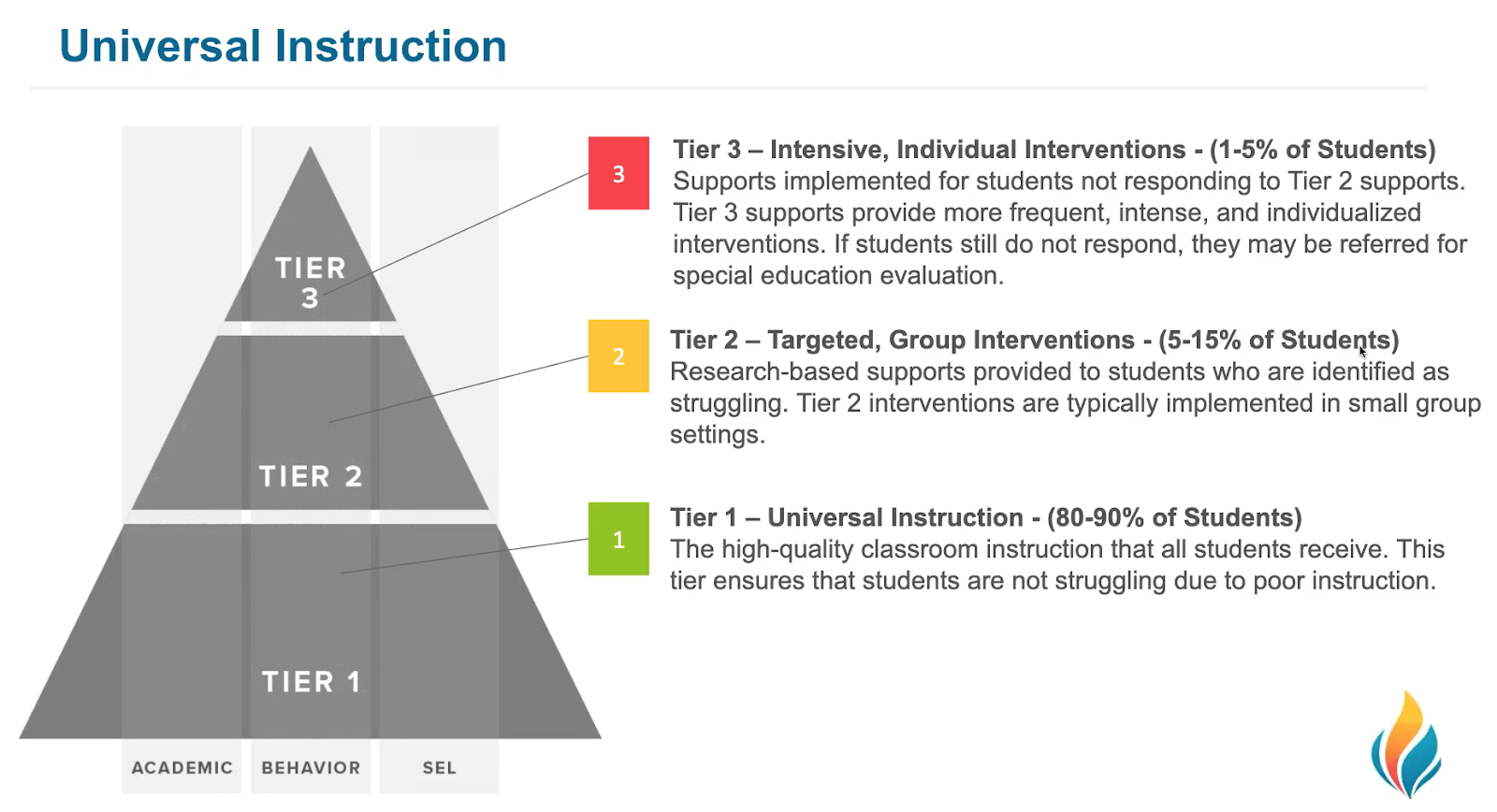Formative assessment is a powerful tool for supporting student success. Nonetheless, there are valid concerns about the amount of testing done in schools. These concerns include the total time required for testing as well as the student’s experience of taking so many tests. Additionally, testing time takes away from instructional time. This blog will provide an overview that defines formative assessment, provides examples, and ends with a case study that shows how formative assessment can be part of efforts to boost student success.
What is Formative Assessment?
Formative assessment includes evaluating student learning along the way to long-term learning goals. One way to think of formative assessment is to remember that it in-forms instruction. Formative assessment is different from other types of assessment in schools, especially summative assessment.
Summative assessments are the types of tests that most people think of when they remember their own school experiences. These are tests that happen at the end of a learning sequence and they provide a sum of the student’s learning. Examples of summative assessment include end of chapter tests and annual state assessments required of students in certain grades.
Summative assessments are important because they indicate if a learner has mastered important knowledge and skills well enough to move on to the next level or to earn a license. Using mastery summative assessments is very important for health and safety. This is why driving a car and performing surgery both require a license.
Yet, formative assessment is also important because it provides a way to know if instruction is working and make changes for individual learners if needed.
Types of Formative Assessment
There are a number of different types of formative assessments that can be used to help teachers adjust instruction and improve students’ learning outcomes. Examples include:
-
Universal Screening
All students complete the same grade-specific assessment and the scores are compared in order to identify students who might require additional assistance.
-
Peer Review:
Students work in teams to review and quiz each other on targeted learning content.
-
Narrative Feedback:
The teacher gives detailed feedback to a student regarding performance on an assignment (e.g., exam, paper).
-
Chapter Quizzes:
Students complete regular quizzes on content from successive book chapters in order to demonstrate their learning from related content.
-
Progress Monitoring:
A student completes weekly assessments of specific target skills that are matched to intervention activities.
All of the above types of formative assessment can be important for student success. Some of these assessments are highly unique (e.g., narrative feedback) while others can be used with groups of students. FastBridge Learning,® publishes both universal screening and progress monitoring measures that can be used with groups of students in order to support individualized instructional needs.
Student Success Example
The following example shows how using two types of formative assessment (e.g., universal screening and progress monitoring) helped a teacher identify a student at risk of reading difficulties and implement effective intervention.
The student, Mark, is a third grader who recently moved to a new school that uses FAST.™ In the fall, his FAST CBMreading English™ screening score was a 61, in the high risk level.

His teacher participated in a grade-level team meeting where the screening scores for all third graders were discussed. The teachers identified the students’ specific instructional needs and grouped the students based on those needs. Mark was placed in a small group working on reading fluency with a plan to monitor his progress using weekly FAST CBMreading passages. His spring goal was set for a realistic and attainable score of 74. Mark’s progress from October is shown in the above below:

The graph makes it seem like he has made excellent progress and his most recent score was 100. Nonetheless, the goal does not match the grade-level spring benchmark. The good news is that Mark’s progress puts him on a path to be very close to the spring benchmark score of 131. One possible next step would be to adjust Mark’s goal to meet the spring benchmark as well as review his current intervention to intensify it in ways that would lead to more accelerated growth.
Formative assessment includes any measures that are completed during instruction for the purpose of reviewing and revising instruction to improve student outcomes. There are a variety of formative assessment types that can be used together with other data such as summative assessment to plan large and small-group instruction. The combination of universal benchmark screening with weekly progress monitoring was used to support a third grader improve his reading skills so that he can reach the spring benchmark goal.
For more information about the formative assessments available from FastBridge visit our website.


![[eBook] Get the Whole Picture: Using Social, Emotional and Behavioral Assessments to Support Student Success](https://5196620.fs1.hubspotusercontent-na1.net/hubfs/5196620/AdobeStock_157265506.jpeg)





